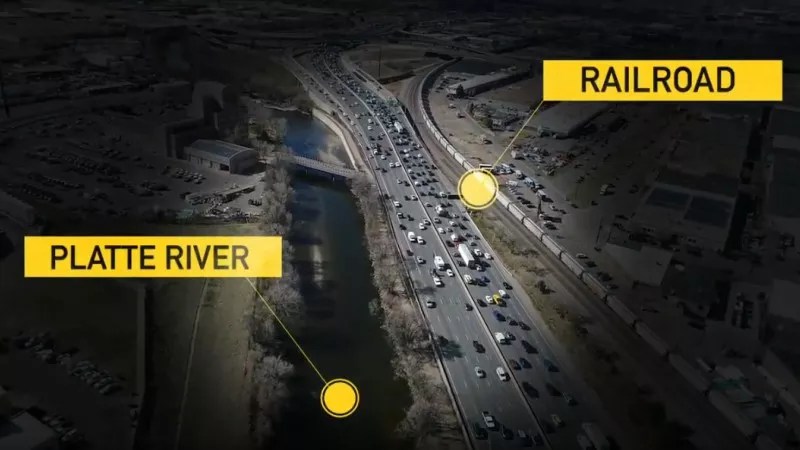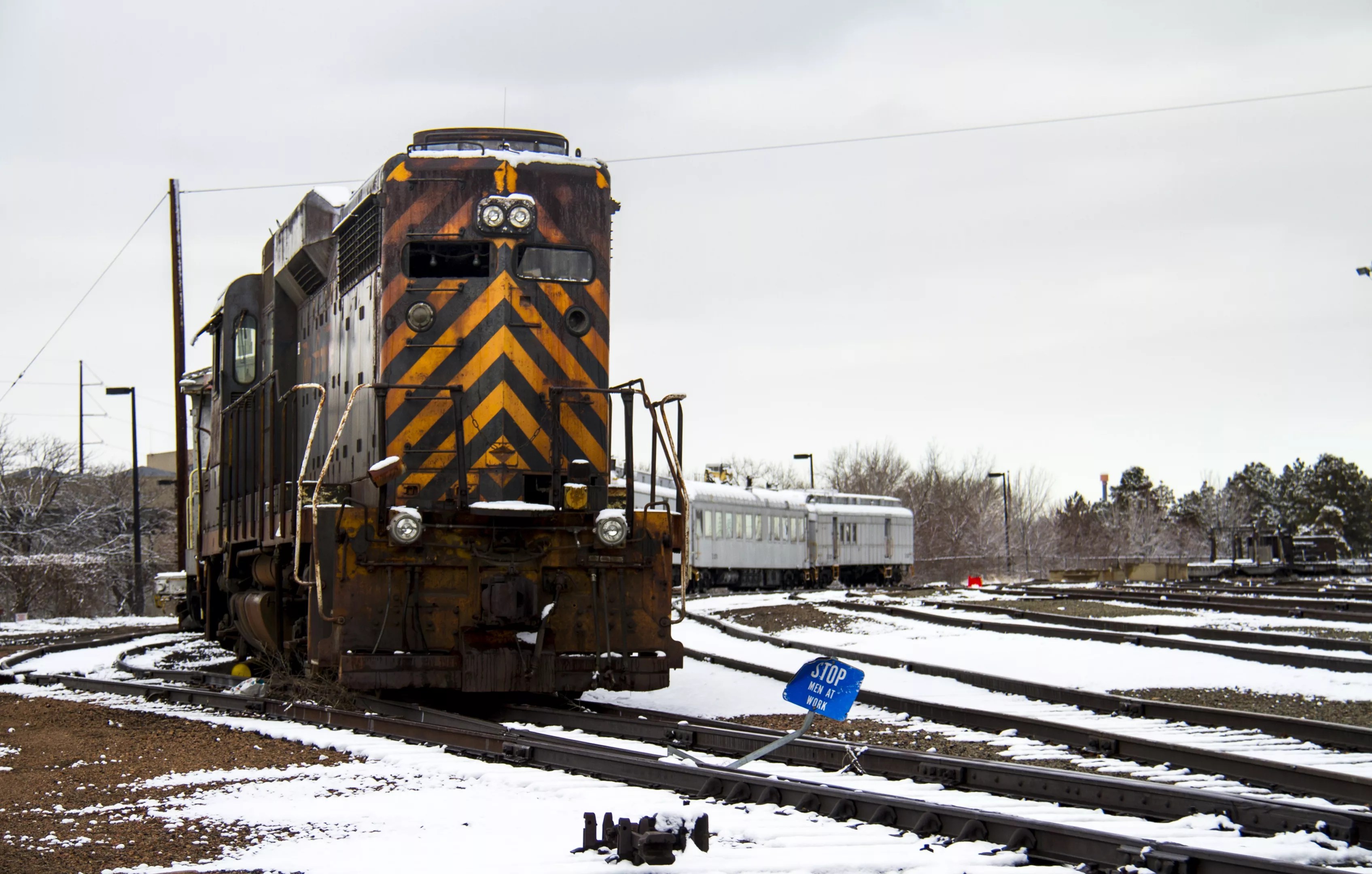

Audio By Carbonatix
Interstate 25 from Santa Fe Drive to 20th Street is the busiest slab of Colorado’s highway system, with an estimated 250,000 vehicles using at least part of it on a daily basis – and that number is expected to hit 300,000 by 2040. In the meantime, approximately 1,000 crashes per year, or around three a day, take place along this five-mile stretch.
The Colorado Department of Transportation considers this situation to be untenable, but that’s nothing new. The agency’s Valley Highway Project Environmental Impact Study (EIS), which called for the reconfiguration and redesign of the interstate in this area and beyond, came out in late 2006, and its Planning and Environmental Linkages (PEL) study has been ongoing for around two years. Indeed, at this time in 2018, CDOT was hopeful that Proposition 110, a ballot measure that designated major funding for highway improvements, would free up $134 million to get the project under way – at least until voters brutally rejected the proposal that November.
Now, however, a variation on the concept is in motion again as a result of negotiations to purchase Burnham rail yard, a 61-acre tract where trains had been serviced for more than a century before its closure in February 2016. (Click to see our Burnham Train Repair Yard slideshow, a visual tour conducted on its last day of operation.) If all goes well, a deal with Union Pacific, Burnham’s owner, will be done in late 2019 or early 2020, triggering a process that could lead to the beginning of changes in this traffic-nightmare zone as soon as two years from now.
Getting to this point has been a lengthy journey, as CDOT engineer and Burnham project manager Steve Sherman and CDOT communication director Matt Inzeo explain.
There’s no debate that this particular portion of I-25 is in sorry shape, Sherman notes. “There’s a lot of obsolete, 1950s-era infrastructure. There’s just a whole lot of need, and it’s been hanging out there for a long time.”
Problem is, the space needed for expansion is severely limited because the highway is pinched between Union Pacific railroad tracks on one side and the South Platte River on the other, as seen in this CDOT photo-illustration.

At the start of the I-25 enhancement process, everything was on the table – including even potentially moving the path of the river. That notion was eventually discarded as impracticable.
The 2006 EIS suggested several less extreme fixes, Sherman attests: “It said we could move the railroad 65 feet. That would give us enough space for full shoulders and maybe an improved ramp on Alameda. But we didn’t love that solution, because it might not have given us the flexibility we needed. No one wanted to tackle the extreme cost or the questions about its apparent value – but we thought 110 might be able to make it happen, so we kept thinking about it.”
In the meantime, he reveals, “we considered two other alternatives that were also part of the 2006 EIS. One was realigning and splitting the corridor – splitting the corridor from Sixth Avenue south, so the southbound lanes would go across the river on the other side of the South Platte and rejoin, maybe at Alameda. But that was a very costly and impactful alternative. We didn’t love it, and it had been eliminated in the Valley Highway EIS as well. Because we were getting a little desperate, we also thought about putting in a multi-level highway, a viaduct. But that was something no one really wanted. It was highly expensive, highly complex, and it had also been eliminated in the 2006 study.”
At that point, “we heard from RTD that they needed two additional tracks between Alameda and Sixth where they have a system bottleneck; they have two tracks and they needed four. So we had that in the back of our minds when we started looking at how to solve this. At first, we thought, what would happen if we moved I-25 over there and rejoined it with the RTD track – maybe do a mini-T-REX through that section? But that was a giant swath of real estate, and moving the highway closer to a lot of residences would be highly impactful and not something we liked at all. But then it occurred to us that the alternative would be to put the railroad tracks that are now parallel to I-25 between I-25 and Sixth and consolidate them with RTD’s light-rail tracks.”
This brainstorm, which struck earlier this year, after Prop 110’s death, instantly appealed to the assorted stakeholders, Sherman recalls. “The original alternative was kind of a stinker, and we didn’t really like the value it brought. But consolidating the light and heavy rail brings a lot of benefits, and the City of Denver, RTD and everyone who’s looked at it thinks it makes a lot of sense. We haven’t found any giant deal-breakers with it.”

A photo from our slideshow of Burnham Yard published in February 2016, when the rail yard closed.
Photo by Kevin Beatty
Cut to July, when, Inzeo says, “Union Pacific put out its RFP [Request for Proposal] on Burnham yard. We were thinking about how to move the rail lines, and suddenly, there’s this big tract of land with rail lines. That gave us a lot of opportunities, from our perspective. So Colorado HPTE [High Performance Transportation Enterprise, a CDOT division] entered into an interagency agreement to carry the ball on a possible purchase agreement with Union Pacific, and at a recent transportation meeting, Union Pacific informed us that we’re their preferred bidder.” Hence “we entered into an exclusivity agreement with the railroad to continue those negotiations. The time frame is the end of the year or early next year for completion of a deal.”
In Inzeo’s view, there are plenty of tangible benefits to shifting the Union Pacific rail lines beyond simply giving CDOT more room to improve I-25, including the elimination of off-highway railroad crossings at Santa Fe Drive and Kalamath Street. “That line is the same one that cuts across Santa Fe right over by Stranahan’s, and there are often slow-moving freight trains that can roll by all the time. The crossing there causes serious safety and mobility issues, whether you’re a car trying to get by or someone who’s walking or biking. And moving them also gives the railroad a more efficient track.”
“By the estimates of the guys who sit out there, 24 trains a day, or one an hour, completely stop traffic at Santa Fe and Kalamath – sometimes during rush hour, and sometimes with back-to-back trains that can completely hammer traffic,” Sherman adds. “Removing those crossings is a huge win for this option, too. And moving the railroad tracks away from I-25 would also improve the South Platte River environmental trails – connectivity to the river and to everything else.”
Moreover, obtaining the parcel affords development possibilities beyond transportation. “We would use a significant piece of that land, but not all of it,” Inzeo divulges, “and that presents additional opportunities for the land to be cleaned and developed. It has been a rail yard that was very physically separated from the neighboring streets. So this would let Denver get back in there and reconnect to it and allow for growth in what has been an abandoned site for the past few years.”

A map of Burnham Yard.
Still, obstacles remain. For one thing, CDOT needs to locate funds with which to purchase Burnham yard, and while Inzeo believes “the Senate Bill 267 fund that the legislature provided to the department [back in 2017] could be a logical pathway there,” nothing’s guaranteed.
Then there’s an analysis mandated by NEPA, the 1969 National Environmental Policy Act, which will determine whether CDOT and its various partners can actually begin implementing their preferred approach. According to Sherman, “The NEPA has to conclude it’s the best possible alternative, so we’re taking a little bit of a risk, in that there hasn’t been the full decision yet. Burnham yard is an opportunity we can’t pass up, but they still need to go through all the alternatives to make sure it would have the best possible outcome.”
As such, CDOT has come up with a few ways to improve this slice of I-25, listed under the headings “Bring the Corridor to Standard” (upgrading lane widths, curves and merge distances), “Add Collector/Distributor Roads” (create routes parallel to the northbound and southbound interstate lanes to improve access to the local street network) and “Add Managed Lanes” (putting in either free or toll lanes).
On top of that, Sherman confirms, any redevelopment of the rail yard “would still have to go through the Denver planning process to reconnect the neighborhoods and also to determine what the future area would be.” For example, “The engine shop could serve as a station for both heavy and light rail. It could be Union Station south.”
Given all the moving parts, a two-year time frame is very tight, Sherman admits, “but it’s possible.” And after a decade-plus of delays and reversals, he’s pleased that he can muster some optimism.